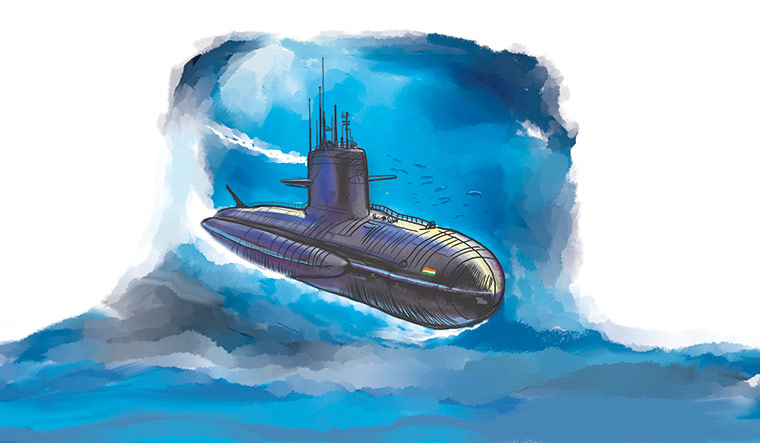India’s Peaceful Nuclear Explosion (PNE) in Pokhran marked the beginning of its seminal journey towards becoming a nuclear weapons state. It was a giant stride in so far as India’s nuclear journey was concerned, achieved against heavy odds.
Several names figure in the gallery of fame of India’s nuclear journey, but physicist Homi Bhabha’s stands out. He was the one who convinced prime minister Jawaharlal Nehru to take the nuclear plunge, despite the odds.
The Pokhran test took place against the backdrop of intense hostility towards India by several world powers. India had, by then, decisively defeated Pakistan in a war, where it had the backing of much of the west and, implicitly China. The war led to its dismemberment and the birth of a new state, Bangladesh. Undertaking a nuclear test at a time like that, hence, was an extremely bold decision by India’s leaders. Many countries were also intent on punishing India for disrupting the so-called established nuclear order. Undeterred, India had proceeded to carry out an underground test in May 1974. PNE experiments were not frowned upon by the International Atomic Energy Agency (IAEA) at the time. Yet, India faced the ire of both the IAEA and much of the world. The immediate fallout was disruption of low-enriched uranium fuel supplies for the US-supplied boiling water reactors in Tarapur.
By the late 1990s, the security situation in India’s neighbourhood had deteriorated further to an extent that India was compelled to carry out a fresh round of nuclear tests in 1998. The international ramifications proved extremely severe. India had already been excluded from the Nuclear Suppliers Group (NSG), and having also refused to sign the Comprehensive Test Ban Treaty (CTBT), a set of additional sanctions were imposed on India, forcing the country to face a situation similar to nuclear apartheid.
Having tested a nuclear weapon device, India then proceeded to frame a well-honed nuclear doctrine. It was unique in the sense that it enshrined the doctrine of ‘No First Use’ of nuclear weapons against other states, including nuclear armed ones. The doctrine underscored that India would retaliate with a nuclear strike, only in the event of use of nuclear or large scale chemical or biological weapons against it. This aspect remains an axiom of faith for India’s political and strategic establishment to this day. It encapsulates the concept of necessity and proportionality.
India’s nuclear doctrine stands in marked contrast to that of Pakistan’s. Islamabad’s nuclear doctrine mentions ‘Full Spectrum Deterrence (FSD)’, designed to prevent conventional conflict at any level in response to aggression against it. In effect, while Pakistan’s first response in such cases may be conventional, it would resort to the use of nuclear weapons.
Any discussion on nuclear matters involves a comparison with numbers and capabilities of potential enemies. From India’s perspective, the number of nuclear warheads possessed by Pakistan principally―and implicitly by China―constitutes the level of threat that India faces from a potential nuclear strike. China possesses a huge nuclear arsenal which could, in theory, be used against India. In reality, however, China’s target is principally the US, the UK, France and NATO.
Most estimates about the nuclear arsenals of India and Pakistan give Islamabad a marginal edge in terms of warheads. Both countries supposedly have between 150 to 160 warheads. In addition, both countries have fissile material stocks to produce many more warheads, and the numbers appear to be growing.
Numbers, however, rarely tell the whole story. China’s huge lead over India in terms of nuclear warheads (the estimate is that it is above 300) constitute, at best, ‘coercive leverage’, rather than a real threat. Beyond numbers, there are other aspects that need consideration in estimating the nature and content of the nuclear threat. While India and Pakistan have roughly equal numbers of warheads, there is the matter of delivery systems. Both countries have a mixture of medium and long range delivery systems, but Pakistan’s systems are solely directed against India, even as India professedly has both Pakistan and China in its sights.
Again, Pakistan’s short range missile system Nasr, and longer range Shaheen-3, Hatf-6 ballistic missile, do pose a clear and present danger for India. India’s riposte, however, lies in its sea-based nuclear weapons’ capability, including (i) its nuclear-powered submarine (Arihant), which is capable of firing nuclear-armed ballistic missiles, and (ii) a second sea-based second strike capability which is getting ready very shortly.
Beyond numbers and variations in delivery systems, geographic dispersion, as also possessing missiles of the right range, are critical. Against Pakistan, India has a clear advantage on both counts given the size of its territory and allied aspects. While the sizes of nuclear arsenals of both countries are perceived as roughly equal, and each country is believed to have fissile material stocks sufficient to produce more weapons, a great deal would depend on the applicable methodology, including which weapons are ready to use at the shortest possible time. These are important in calculating readiness to launch a nuclear strike.
The nuclear debate continues. What is, however, highly satisfying for India is that following complex diplomatic negotiations during 2005-2008 and thereafter, India is now an acknowledged nuclear weapons power. It is currently a member of the NSG and has joined the mainstream as a full partner and participant in the global nuclear order. India currently has bilateral nuclear arrangements with over a dozen countries, including all the nuclear powers, with the exception of China.
The author is former director of Intelligence Bureau, former national security adviser and former governor of West Bengal.



